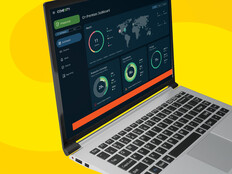How to Modernize Federal Applications for Hybrid Environments
There is no point in replatforming an application solely for the sake of new technology.
So, when modernizing applications in this way, agency IT leaders need to think through what the objective is. Is it eliminate older infrastructure, or is it to leverage capabilities that only the cloud can offer, such as scalability, or something else entirely? The answers will drive decisions on which platforms the agencies choose and what downstream systems apps will need to interface with — a client system, data warehouse or something else.
Agencies will then need to choose which commercial cloud provider they want to work with, whether that is Amazon Web Services, Microsoft Azure, Google Cloud or something else. If an agency has heavily invested in one platform or another, it may make sense to pursue application modernization in hybrid cloud environments with those platforms and to reuse existing resources and knowledge bases.
Financial considerations present another challenge. Many agencies are using cloud contracts with caps on usage to let them expand and modernize their applications more easily, without having to secure additional funds.
Federal agencies should be aware that, in some cases, multiple agencies may be sharing a cloud environment. They also need to ensure that sensitive data is protected in accordance with federal security guidelines. Some data may need to remain on-premises, and the type of hybrid environment created for it may depend on security requirements, including who has access to certain applications. The consequences of a breach are significantly more severe in federal contexts than commercial ones, especially for national security environments.
CHECK OUT: Read these 7 tips for cloud migration.
The Benefits of a Hybrid Cloud Approach to Application Modernization
Agencies gain several key benefits from moving legacy on-premises architectures to a hybrid cloud environment. One is that agencies can leverage DevOps more easily, breaking away from the rigid development and modification processes for applications that often characterize legacy environments.
Agencies that use DevOps can be more agile in how they design and update applications. This grants them the same flexibility the commercial sector has been enjoying for many years in terms of adding new features and functionality to applications. Agencies using DevOps can push out software updates much in the same way Apple does with iPhone software patches, allowing applications to be more responsive to users’ needs and mission requirements.
Modernizing applications in a hybrid environment also allows agencies to be less dependent on veteran staffers with experience in using older coding languages. By updating applications, agencies don’t risk losing institutional knowledge on how to run the applications as those workers retire. Otherwise, agencies might be forced to pay significant amounts to outside consultants with expertise in those outdated programming languages.
In the end, modernizing applications for hybrid environments gives agencies the agility and flexibility often found in the commercial sector. Agencies can be much more responsive to changes in mission needs or sudden events that force them scale up services, as was the case early in the coronavirus pandemic. It’s an approach federal IT leaders should be pursuing with enthusiasm.
This article is part of FedTech’s CapITal blog series. Please join the discussion on Twitter by using the #FedIT hashtag.













